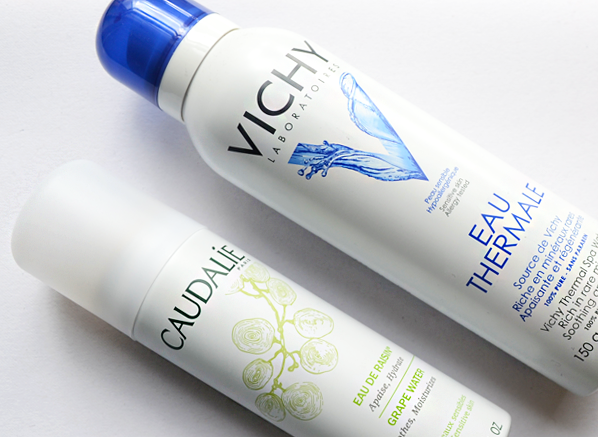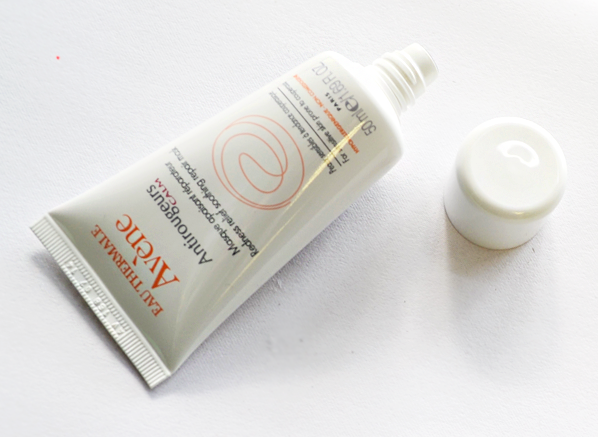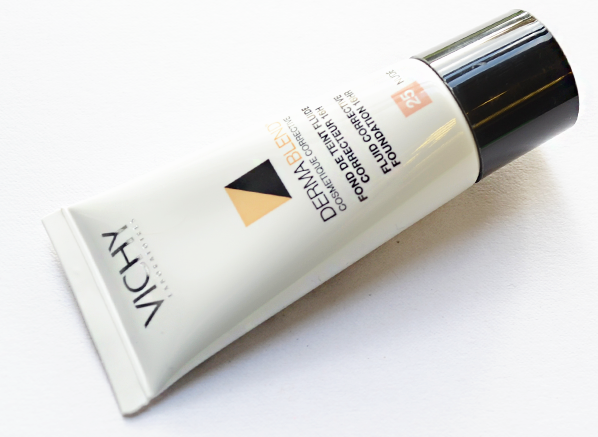
Rosacea is a common and unfortunately long-term skin condition that affects millions of people globally. However despite its prevalence, it’s often a pretty misunderstood ailment, frequently mistaken for rosy cheeks, sunburn or acne.
In this latest guide we’ll be taking a whistle stop tour through the world of rosacea, looking into what this skin condition is, what the symptoms are and what you can do to care for and treat it.
What is Rosacea?
Rosacea is a chronic, non-contagious skin condition that mainly affects fair-skinned, Northern European men and women. It generally affects the face, particularly the central third and especially the nose causing tiny red pimples, painful-looking inflammation and fine red lines to appear amongst an array of other visible symptoms.
The impact that this condition has on sufferers shouldn’t be underestimated. Changes to the physical appearance can have a significant psychological and social impact, affecting how sufferers feel about themselves and how they interact with others. We’ve all been there – woken up with a nasty spot and just wanted to crawl back into bed and hide away, so it’s not hard to imagine how those with rosacea might feel on a day-to-day basis.
Rosacea is a relapsing condition meaning that it comes and goes, tending to evolve in stages. There will be periods when symptoms are particularly bad with skin that’s noticeably red and angry-looking, but such episodes are usually followed by periods by calm where symptoms are less severe and skin is clearer.
What are the symptoms?
Rosacea usually rears its head first with short episodes of flushing, which is where the skin turns red for a really short period of time and then returns to normal. This symptom can easily be mistaken for rosy cheeks, but should not be overlooked as it’s often a warning sign that other, harsher symptoms are on their way.
Perhaps the most recognisable symptom of rosacea is persistent facial redness (scientifically known as erythema) which refuses to budge. This redness might look like a deep, pinky-red blush or sunburn and is sometimes confused with the blotchy skin that is usually seen on heavy drinkers and alcoholics. This redness sometimes causes swollen, painful skin and is usually contained to the cheeks, nose and chin but can sometimes spread to the forehead, neck and cheeks. This is one of the most embarrassing and bothersome symptoms of this condition.
Other symptoms that may appear are dilated blood vessels which appear on the cheeks as thin, wavy red lines, round red bumps known as papules and pustules which look similar to acne but are actually pus-filled swellings that whilst grim don’t block pores and don’t cause scarring.
Some sufferers might also experience eye irritation, known as Ocular Rosacea which causes uncomfortably dry, bloodshot eyes, eyelid inflammation and the persuasive feeling that there’s something stuck in your eye.
What are the causes?
Whilst the exact cause is unknown it’s thought by dermatologists that a number of different factors and triggers might be responsible, or a combination of the two.
Some of the main factors that have been suggested include blood vessel abnormalities which could be responsible for causing flushing, redness and broken capillaries, a genetic disposition to the skin condition or (look away now if you’re easily grossed out) microscopic mites called demodex folliculorum that live on human skin, feeding on oils and skin cells. These microscopic mites are usually harmless and are thought to live on almost everyone’s skin but scientists think that rosacea might be a reaction to these mites presence, although it has yet to be conclusively proven.
Rosacea triggers are not thought be direct causes of the condition, but some sufferers find their symptoms are worsened after exposure. Triggers vary from person to person so it might take a bit of detective work to uncover yours! However some of the most popular aggravators include stress, spicy foods, UV rays, hot baths, caffeine, dairy products, alcohol and the climate.
How can I treat it?
If you have persistent rosacea symptoms that are not eased by typical self-help methods then it’s best to seek help from your GP as early treatment can stop the condition getting worse. Whilst there are no specific tests to confirm rosacea, your doctor will usually be able to diagnose it by examining your skin and enquiring about symptoms. Your GP might also arrange further tests to rule out other skin conditions with similar symptoms or prescribe you specific medication to help you control the condition.
Fortunately, there are also plenty of things that you can do to try and ease your rosacea yourself, from making small lifestyle changes to changing up your skincare routine. For instance, try and avoid hot baths and showers which can trigger inflammation and redness, don’t rub your skin dry; instead gently pat it and keep away from hot, spicy foods and dairy products to avoid any sudden flare-ups.
There’s also a plethora of specialist dermo-cosmetic skincare that will both treat and soothe redness and Rosacea, the majority of which have their origins in the humble French Pharmacy, long renowned for their innovative products that cater to nearly every sensitive skin need.
But how do you know which products are right for your rosacea-prone skin? To help you navigate the minefield that is the French Pharmacy, I’ve broken down the specific products available and sorted them into the relevant categories so you can pick and choose your perfect skincare regime!
Cleansing
Let’s start with cleansing! When it comes to cleansing, rosacea sufferers can find that their skin doesn’t get on with traditional soap-based cleansers and that they require something a little more gentle. Rosacea sufferers needn’t fear finding the perfect cleanser as the French Pharmacy has got their back!
Undoubtedly the most famous cleanser of them all is the Bioderma Sensibio H20 Micelle Solution which was created especially to suit the needs of those with redness and irritated skin. It’s got a physiological PH, a soap-free base and is alcohol-free to reduce the risk of any reactivity. But best of all it quickly and effortlessly removes all traces of make-up and grime in one fell swoop. One of these bad boys is sold every 2 seconds across the world and it’s not hard to understand why. Once you’ve gone Bioderma, you’ll never go back.
Next up is the super-skin friendly Avene Extremely Gentle Cleanser, which cleanses hyper-sensitive skin with its mild, soap-free formulation, leaving it refreshed and comfortable, never stripped or tight feeling. Great to use after the micellar solution for a double-cleanse.
If you prefer a cleansing gel, but enjoy the ease of a micellar water then the La Roche-Posay Rosaliac Micellar Gel is for you! This hybrid micellar-gel cleanser gently removes all traces of grime and make-up with its glide-on texture that reduces the need to rub. Plus, it’ll instantly reduce visible redness thanks to its ‘icy-effect’ that gives skin a quick revitalising boost.
No piece on cleansing rosacea-prone skin with products found at the French Pharmacy would be complete without a shout-out to Thermal Water Sprays. Pretty much every brand from Vichy, La Roche-Posay to Avene and Caudalie have their own thermal water offering, each with their own specialist skin-soothing properties. If you’ve got really sensitive skin and find that tap-water leaves it feeling tight and uncomfortable, then you might find using one of these sprays to moisten skin prior to cleansing beneficial. Plus, they can also be used as a toner after cleansing for an extra dose of hydration and to pacify any sudden flare-ups. A true multi-purpose product for your bathroom cabinet.
Daily Moisturisers
An important part of any skincare regime, but one that’s especially worrisome for rosacea sufferers who’re often concerned that their moisturiser might do their complexion more harm than good. There are plenty of moisturisers to chose from dans la pharmacie, each one specially formulated for red and rosacea-prone skin.
There’s the Bioderma Sensibio Anti-Redness Cream which aims to reduce the intensity of redness and prevent its re-occurrence, La Roche Posay’s Rosaliac UV Riche Fortifying Anti-Redness Cream, an award-winning treatment enriched with a multitude of vitamins that helps fight redness daily and the ultra-regulating Avene Antirougeurs Jour Redness Relief Cream to name just a few!
Treatments and Masks!
Red, rosacea prone-skin deserves a pamper every now and again with a luxuriously rich mask or treatment cream that’ll hydrate, repair and restore. Whilst options are a little limited, the ones on offer are true tried and tested hero products that’ll certainly give your skin a well deserved treat!
Firstly we’ve got the Avene Antirougeurs Fort Relief Concentrate for Chronic Redness, an intensely nourishing treatment fluid that calms the heat, itchiness and discomfort associated with rosacea, whilst reducing the visibility of blood vessels and regulating the skin’s natural balance. Another option is the La Roche-Posay Rosaliac AR Intense Localised Anti-Redness Intensive Care Serum, a deeply hydrating treatment that infuses skin with powerful natural extracts to strengthen, decongest and reduce redness.
To combat dryness and peeling, try applying the La Roche-Posay Cicaplast Soothing Repairing Balm in a thick layer on your face and leave for as long as possible so it can work its magic and encourage epidermal recovery.
Lastly, the Avene Antirougeurs Calm Soothing Repair Mask provides a fantastic treat, soothing and calming new flare-ups with its fresh and creamy texture that seeks to improve the skin’s circulation to diffuse long-term redness whilst moisturising and repairing skin’s tone and texture. A very worthy edition to your beauty arsenal.
Concealing redness…
Whilst updating your skincare regime with specific products to treat and ease your rosacea is vital, they won’t work instantly unfortunately. It’ll take time to reduce redness and inflammation. In the meantime you’ll want something to hide and conceal any imperfections, something that won’t hinder all the good work you’ve been doing by triggering a flare-up or a sensitivity reaction.
This is another area that the French Pharmacy shines, with cult products such as Vichy’s Dermablend range, containing a face and body foundation, concealer, compact and setting powder to restore confidence. The Dermablend Fluid Corrective Foundation has been designed to expertly cover a range of skin concerns from acne to birthmarks, blemishes to rosacea and is suitable for even the most fragile and sensitive of skins. Check out this post for a more in-depth review and swatches of this incredible foundation.
If the Vichy Dermablend is not your cup of tea, then how about the La Roche-Posay Rosaliac CC Daily Unifying Complete Correction Cream? Created in a universal shade that easily adapts to the majority of fair to medium skin-tones, this CC cream provides natural-looking coverage with a silky formula that sinks straight into skin. What’s more this CC cream has been enriched with a naturally derived ingredient that helps to neutralise long-term redness making this a wonderful skincare-foundation hybrid! And let’s not forget the Bioderma Sensibio AR BB Cream, the bloggers favourite that has a groundbreaking cocktail of seven anti-redness skincare benefits and comes in at a really affordable price!
And there we have it – a whistle-stop tour of Rosacea! Let us know in the comments if you have any tips or tricks for caring for your rosacea. If you have any questions or need some advice about caring for your rosacea, feel free to tweet me at @EscentualKay.










